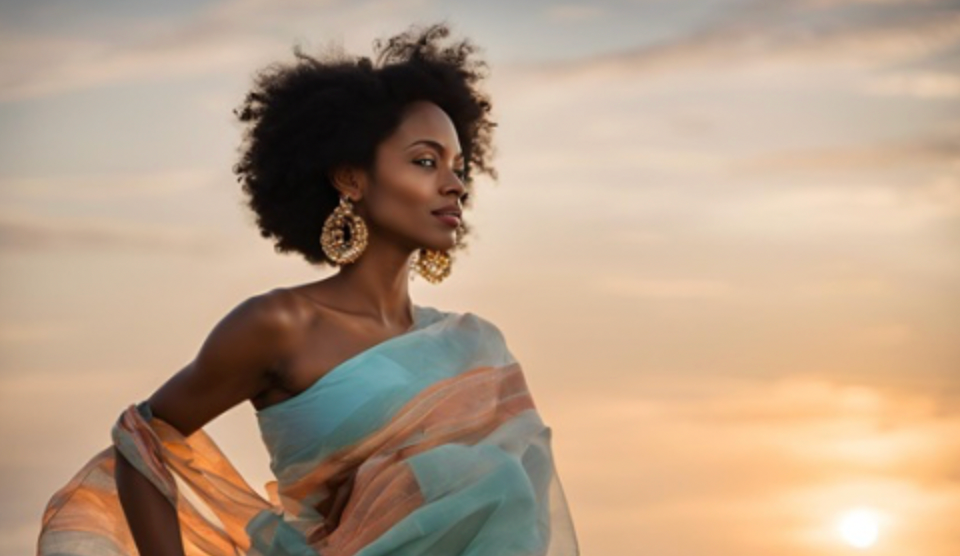The Role of Sarees in Indian Weddings: A Deep Dive into Kanjivaram Silk and Other Traditional Fabrics
Indian weddings are a beautiful blend of culture, rituals, and vibrant traditions, with one element standing out — the saree. A symbol of grace, heritage, and timeless elegance, the saree has long been an essential part of Indian bridal attire. Among the many varieties of sarees, Kanjivaram silk is a cherished favorite, known for its grandeur and cultural significance.
The Significance of Sarees in Indian Weddings
Sarees hold immense cultural and emotional value in Indian weddings. They are not just pieces of clothing; they are imbued with tradition, symbolism, and a sense of identity. Each region of India has its own special kind of saree, woven with unique patterns, fabrics, and craftsmanship that represent the local culture and history. A bride's saree is often chosen with great care, representing her family's heritage and marking the beginning of her new life. In many cases, the saree is passed down through generations, holding sentimental value and connecting brides to their ancestors.
Kanjivaram Silk: The Jewel of Indian Sarees
One of the most revered and luxurious fabrics in India, Kanjivaram silk has become synonymous with South Indian weddings, particularly in Tamil Nadu. Known for its rich texture, intricate designs, and vibrant colors, the Kanjivaram silk saree is a staple for brides, making it an indispensable part of the wedding celebrations.

Origin and Craftsmanship
Kanjivaram silk is woven in the town of Kanchipuram in Tamil Nadu, where skilled artisans have been perfecting the art of silk weaving for centuries. The fabric is crafted using pure mulberry silk threads and is traditionally handwoven. The beauty of Kanjivaram lies not just in its vibrant colors and gold zari (thread) work, but also in the meticulous weaving process that requires high levels of expertise and time. Each saree takes days, if not weeks, to complete, making them a valuable and cherished possession.
Designs and Symbolism
Kanjivaram sarees are known for their elaborate designs, which include motifs like peacocks, elephants, paisleys, and floral patterns. The use of gold and silver zari threads enhances the elegance of the saree, making it suitable for grand occasions like weddings. The border of a Kanjivaram saree often features contrasting colors and intricate designs, symbolizing prosperity and good fortune. The saree's vibrant colors, such as deep reds, rich greens, royal blues, and mustard yellows, hold cultural meanings — red symbolizes fertility and prosperity, while gold represents purity and auspiciousness.
Why Kanjivaram Silk is the Bride's Choice

For many brides, a Kanjivaram silk saree is a dream come true. The richness of the fabric, its shine, and its royal appearance make it the perfect choice for a wedding. A Kanjivaram saree is not just a garment; it is a heritage piece that transcends time. Wearing it makes a bride feel regal, elegant, and deeply connected to the cultural heritage of India.
In addition to its aesthetic beauty, Kanjivaram silk is known for its durability. The saree can last for decades, often becoming an heirloom passed down from one generation to the next. Many families invest in multiple Kanjivaram sarees for different wedding rituals, with the bride wearing different ones for each ceremony, such as the engagement, the wedding, and the reception.
Other Popular Sarees for Indian Weddings
While Kanjivaram silk is a top contender for South Indian weddings, other types of sarees are equally revered in different regions of India:
-
Banarasi Silk Saree: Originating from Varanasi, this saree is known for its luxurious gold or silver brocade work and intricate floral patterns. A Banarasi saree is a symbol of grandeur and is often favored for North Indian weddings.
-
Chanderi Saree: Hailing from Madhya Pradesh, Chanderi sarees are known for their sheer texture and lightness. They are perfect for a bride who wants something elegant yet easy to wear.
-
Kota Doria Saree: This saree, originating from Rajasthan, is characterized by its unique checkered design. It is lightweight and ideal for destination weddings or casual ceremonies.
-
Paithani Saree: A traditional Maharashtrian saree made from silk, Paithanis are famous for their elegant designs and royal borders, often chosen for weddings in Maharashtra.
-
Bandhani Saree: A signature saree of Gujarat and Rajasthan, Bandhani sarees are known for their colorful tie-dye patterns. These are a popular choice for bridal wear, particularly in vibrant and festive weddings.

The Emotional Value of Sarees in Weddings
Apart from their visual beauty, sarees also carry deep emotional value in Indian weddings. Brides often wear sarees gifted by their mothers or in-laws, which serves as a beautiful bonding experience between the families. The saree is not just a piece of cloth; it is a symbol of love, blessing, and tradition passed on through generations.
In many families, the bride's saree is carefully chosen to mark the significant ritual of the wedding day. The saree is often worn for the wedding ceremony itself, and after the wedding, it becomes a part of the bride's trousseau, a reminder of her special day.
"Wrapped in the timeless elegance of tradition, a saree not only adorns the bride but also carries the essence of love, heritage, and new beginnings, weaving memories that last a lifetime."




